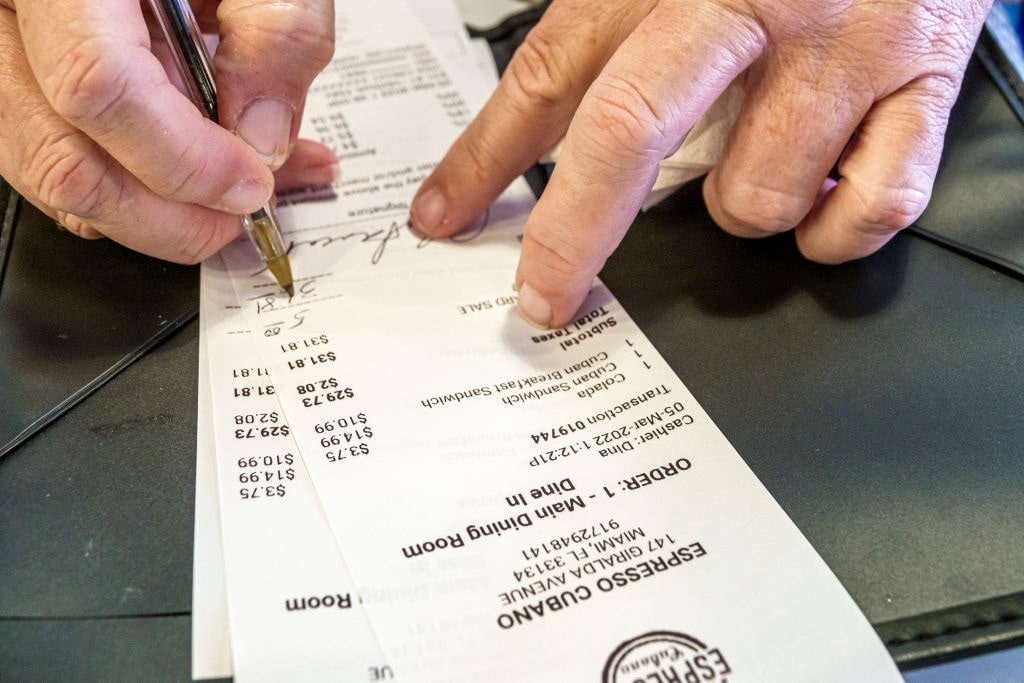Would the national economy collapse if the US government and consumers repaid all their debt or if borrowing were outlawed? It is a fair question considering how much debt the public and private sectors have amassed since the coronavirus pandemic. While red ink had traveled throughout the US landscape before the COVID-19 public health crisis, the number of IOUs has flooded the country in the last few years. A few pieces of recent data highlight how much debt is swallowing the United States economy.
The Walking Debt
With a couple of months left of fiscal year 2023, the federal government has already recorded the third-largest budget deficit in American history and the highest ever outside of the pandemic years. In July, Washington posted a shortfall of $221 billion, bringing the total to $1.613 trillion and keeping the rolling 12-month deficit to north of $2 trillion. In all of last year, the budget gap was $1.375 trillion.
Last month, tax receipts rose nearly 3% to $276 billion, and government spending climbed by roughly 3% to $497 billion. In the first ten months of 2023, revenues have tumbled 10% to $3.7 trillion, while spending has surged 10% to $5.3 trillion. According to the Congressional Budget Office (CBO), the drop in receipts has been driven mainly by the smaller-than-expected collections of individual and corporate income taxes. The double-digit growth in spending has been caused by increased outlays for Social Security, Medicare, Medicaid, and interest.
As interest rates keep climbing, the cost to service America’s debt continues growing. Fiscal year-to-date, interest has topped $725 billion and is poised to crack the $1 trillion mark for the first time. Today, interest spending tops the national defense, Medicare, education, veterans’ benefits, and transportation. CBO and White House projections anticipate this will be the new normal over the next decade.
This is why Fitch Ratings downgraded the US government, not because of former President Donald Trump. The agency specifically noted that “expected fiscal deterioration” over the next three years was the primary reason for Washington’s haircut. But do not tell the current administration this because officials will shriek to the heavens that it was the Trump downgrade as they continue to borrow.
Just Tap It
US credit card debt has touched the $1 trillion mark for the first time on record. According to the Federal Reserve’s H.8 report, which looks at the assets and liabilities of commercial banks, total balances on credit cards and other revolving accounts topped $1 trillion for the week ending July 26. The data revealed in the last week that it went back down to $998 billion. This is up $200 billion from the beginning of the year and nearly $300 billion from the pandemic low of $736 billion.

(Photo by: Jeffrey Greenberg/UCG/Universal Images Group via Getty Images)
Credit card debt has always been pervasive in the US marketplace. The chief concern in today’s economic landscape is surging borrowing costs. Interest rates on credit cards are close to a 40-year high of around 21%. With the Federal Reserve potentially pulling the trigger on another rate hike before the year is over, consumers may have to endure another uptick in a Visa or Mastercard’s interest rate.
What do you get when market analysts combine high credit card debt volumes, climbing interest rates, and a soaring cost of living? A jump in delinquency rates. The New York Fed’s latest Survey of Consumer Expectations (SCE) found that the flow of consumers into serious delinquency climbed to 5.08% in the second quarter, up from 3.35% in the same three-month period a year ago.
Economists have learned something else: Shoppers have yet to tap into their credit lines fully. According to various estimates, consumers still have access to approximately $3 trillion in untapped funds, despite financial institutions tightening lending standards and weakening loan demand. If half the country is living paycheck to paycheck, and households are struggling to keep their heads above water due to crippling price pressures, the dependence on credit cards might have only just begun.
The $17 Trillion Question
 The New York Fed’s SCE report confirmed that total household debt reached a fresh record high of $17.06 trillion. The gains were led by credit cards ($45 billion) and auto loan debt ($250 billion). Home equity line of credit added another $1 billion, and the “other” category contributed $15 billion to the haul. Unsurprisingly, student loan debt plunged by $35 billion, while mortgage debt was essentially unchanged in the April-June span.
The New York Fed’s SCE report confirmed that total household debt reached a fresh record high of $17.06 trillion. The gains were led by credit cards ($45 billion) and auto loan debt ($250 billion). Home equity line of credit added another $1 billion, and the “other” category contributed $15 billion to the haul. Unsurprisingly, student loan debt plunged by $35 billion, while mortgage debt was essentially unchanged in the April-June span.
Indeed, this is truly a never-ending story. Uncle Sam is drowning in debt and maintaining his spending binge only by borrowing, taxing, and printing. Tom, Dick, and Harry are keeping up with the Joneses or just trying to survive by relying on credit cards and other debt instruments to put food on the table. Fiscal responsibility is a relic of a bygone era. Or maybe households cannot save for a rainy day because the cost of living is too high!




